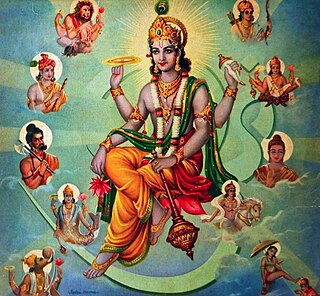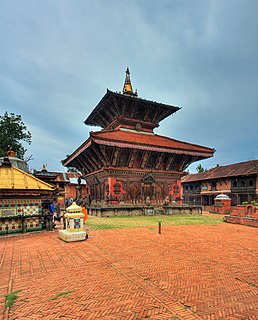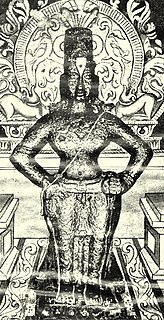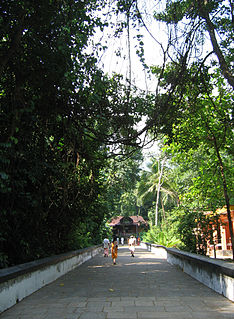Culture
Worshiping originated from Halumatha. Stone is the source for the soil. Soil is the source for the plants. Plants are the source for the animals. This may be the reason for worshiping Almight in Stone. Through the ages, this stone worship tradition might have led to worshiping Shiva as Beeralingeswara, Mailara Linga, Malladevaru, Mahadeshwara, Nanjundeswara, Mallappa, Mallara, Mallikarjuna etc. Even the worshiping of shakti as Yellamma, Renuka, Chowdamma, Kariyamma, Chamundi, Bhanashankari, Gullamma etc. might have come from this tradition. Even today, ancestral worship as deities is very common. The worship of ancestors like Revanasidda, Rama, Hanuman, Krishna, Keshava, Ranganatha, Eerathimmanna, Tirupati Thimmappa, Venkateswara, Kalidasa, Siddarama, Kanakadasa etc. as Devaru very much exists in Kuruba Gowda traditions. Kurubas worship Shiva and Vishnu concept of the Almighty with the equal devotion.

Avatar, is a concept within Hinduism that in Sanskrit literally means "descent". It signifies the material appearance or incarnation of a deity on Earth. The relative verb to "alight, to make one's appearance" is sometimes used to refer to any guru or revered human being.
Prayer is considered to be an integral part of the Hindu religion; it is practiced during Hindu worship (puja) and is an expression of devotion (bhakti). The chanting of mantras is the most popular form of worship in Hinduism. Yoga and meditation are also considered as a form of devotional service.

Ayyavazhi and Hinduism are two belief systems in India. Although Ayyavazhi continues to officially exist within Hinduism and is considered by some observers to be a Hindu denomination, some members of the religion claim that it is independent. The most notable distinction between Hinduism and Ayyavazhi is their different approaches to the concepts of good, evil and dharma.

The guru–shishyatradition, or parampara ("lineage"), denotes a succession of teachers and disciples in Indian-origin religions such as Hinduism, Jainism, Sikhism and Buddhism. Each parampara belongs to a specific sampradaya, and may have its own gurukulas for teaching which might be based at akharas, gompas, mathas, viharas or temples. It is the tradition of spiritual relationship and mentoring where teachings are transmitted from a guru "teacher" or lama to a śiṣya, shramana (seeker), or chela (follower) after the formal diksha (initiation). Such knowledge, whether agamic, spiritual, scriptural, architectural, musical, arts or martial arts is imparted through the developing relationship between the guru and the disciple.
Kuruba is a Hindu caste native to the Indian state of Karnataka, Tamil Nadu, Andhra Pradesh and Telangana. They are the third-largest caste group in Karnataka. Traditionally, they were shepherds, militiamen from the hills, armed vassals, or postmen. They practiced sheep/goat and cattle pastoralism, in that they either herded exclusively sheep, or a mixed herd of sheep and goats, or cattle. Farming is also the occupation of the Kuruba Gowdas in Mysore region of Karnataka.

Dhangar is a herding caste of people found in the Indian states of Maharashtra, Karnataka, Goa, Madhya Pradesh and Uttar Pradesh. They are referred as Gavli in southern Maharashtra, Goa and northern Karnataka, Golla in Andhra Pradesh and Karnataka and Ahir in northern Maharashtra. Some Gavlis live in forested hill tracts of India's Western Ghats. Gavli, also known as Dange or Mhaske, and Ahir are a sub-caste of Dhangar. However, there are many distinct Gavli castes in Maharashtra and Dhangar Gavli is one of them.
Kamsale is a unique folk art performed by the devotees of God Mahadeshwara. Kamsale is a brass made musical instrument. Its origin is traced to the Mythological period.
Dollu Kunitha, is a major popular drum dance of Karnataka.

The ancient Hindu temple of Changu Narayan is located on a high hilltop that is also known as Changu or Dolagiri. The temple was surrounded by champak tree forest and a small village known as Changu. The temple is located in Changunarayan Municipality of Bhaktapur District, Nepal. This hill is about 7 miles or 12 km east of Kathmandu and a few miles north of Bhaktapur. The Manohara River flows beside the hill. This shrine is dedicated to lord Visnu and held in special reverence by the Hindu people. This temple is considered to be the oldest temple in the history of Nepal. The Kashmiri king gave his daughter, Champak, in marriage to the prince of Bhaktapur. Changu Narayan Temple is named after her.

Vithoba, also known as Vi(t)thal(a) and Panduranga, is a Hindu deity predominantly worshipped in the Indian state of Maharashtra and Karnataka. He is generally considered as a manifestation of the god Vishnu, or his avatar, Krishna. Vithoba is often depicted as a dark young boy, standing arms akimbo on a brick, sometimes accompanied by his consort Rakhumai.

Nagaradhane is a form of cobra worship which, along with Bhuta Kola, is one of the unique traditions prevalent in coastal districts of Dakshina Kannada, Udupi and Kasaragod alternatively known as Tulu Nadu, practiced by Tuluva community members. Cobras are not just seen as deities, but as an animal species which should be respected, appeased and protected for multiple social, religious and ecological reasons.

Vilwadrinatha Temple is a Hindu temple located in Thiruvilwamala, Thrissur district of Kerala. Lord Rama, the seventh avatar of Lord Vishnu, and his brother Lord Lakshmana are the main deities of this temple. This is one of the four major temples in Kerala dedicated to Lord Rama, the other three being Thriprayar, Kadavallur and Thiruvangad temples, and also one of the rarest temples in India itself which houses Lord Lakshmana. The temple is situated on the middle of Thiruvilwamala village, on the top of a hill 100 ft above the sea level. Bharathappuzha, the second largest river in Kerala, flows through the northern side around 3 km away from the temple, and as the temple is situated on the top of a hill, the river can be clearly seen from the temple.
Bettadapura is a town located in Mysore district, in the Indian state of Karnataka. The name is derived from two Kannada words, "Betta" and "pura". Betta means "hill" and pura means "town".

Banalinga, a stone found in nature, in the bed of the Narmada river in Madhya Pradesh state, India, is an iconic symbol of worship, based on either the scriptures or cultural traditions among the Hindus, particularly of the Shaivaites and Smartha Brahmins. Stones are ancient and connote divinity. It is a smooth ellipsoid stone.
Tokha Chandeshwari is a village and former Village Development Committee that is now part of Tokha Municipality in Kathmandu District in Province No. 3 of central Nepal. At the time of the 2011 Nepal census it had a population of 3,961. Tokha Chandeshwari now is part of Tokha municipality.

Kali, also known as Dakshina kalika, is a Hindu goddess who is considered to be the master of death, time and change. She is a form of Parvati, the supreme of all powers, or the ultimate reality. Kali is belived as form of Parvati wife of lord Shiva in all over southeast Asia and Indian subcontinent except Kerala. According to Kerala folk beliefs, she is belived as goddess, emerges from third eye of lord Shiva to destroy demons so in Kerala she is called Shiva putri kali.
Kumarakoil or Kumarakovil is a small village located in the Kanyakumari district in Tamil Nadu, India.

Tulasi, Tulsi or Vrinda is a sacred plant in Hindu belief. Hindus regard it as an earthly manifestation of the goddess Tulasi; she is regarded as the avatar of Lakshmi, and thus the consort of the god Vishnu. In the story, she married Jalandhara. The offering of its leaves is recommended in ritualistic worship of Vishnu and his avatars like Krishna and Vithoba.

Kottiyoor Temple is a prominent Shiva temple in Kottiyoor, Kannur, Kerala,India. Vadakkeshwaram Temple is the common name of the temple from ancient times, but some of the local people address the temple as Ikkare Kottiyoor as it is on the bank of the river close to the Kottiyoor village, to differentiate it from the shrine in the other side of the river. Thruchherumana Kshetram is also another name by which temple is known. The temple is a special category temple under Malabar Devaswom board.

Over the millennia of its development, Hinduism has adopted several iconic symbols, forming part of Hindu iconography, that are imbued with spiritual meaning based on either the scriptures or cultural traditions. The exact significance accorded to any of the icons varies with region, period and denomination of the followers. Over time some of the symbols, for instance the Swastika has come to have wider association while others like Aum are recognized as unique representations of Hinduism. Other aspects of Hindu iconography are covered by the terms murti, for icons and mudra for gestures and positions of the hands and body.











